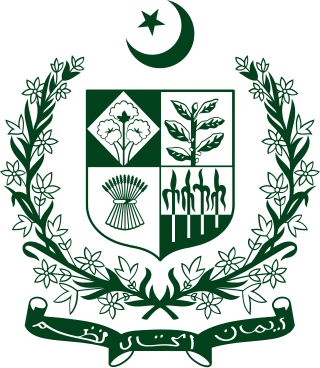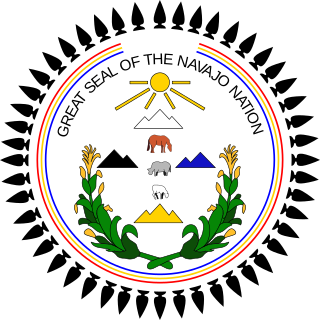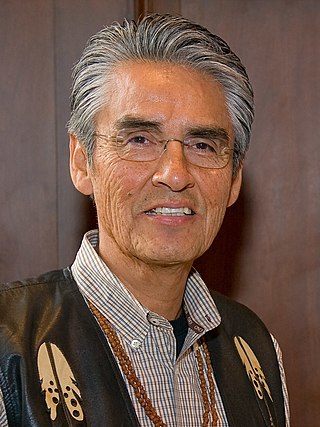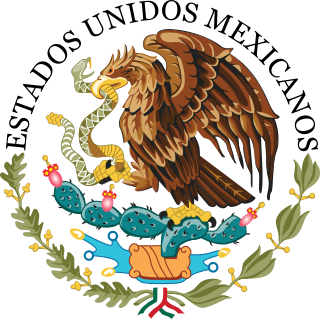
The politics of Equatorial Guinea take place in a framework of a presidential republic, whereby the President is both the head of state and head of government. Executive power is exercised by the government. Legislative power is vested in both the government and the Chamber of People's Representatives

Article Two of the United States Constitution establishes the executive branch of the federal government, which carries out and enforces federal laws. Article Two vests the power of the executive branch in the office of the president of the United States, lays out the procedures for electing and removing the president, and establishes the president's powers and responsibilities.

The Hopi are Native Americans who primarily live in northeastern Arizona. The majority are enrolled in the Hopi Tribe of Arizona and live on the Hopi Reservation in northeastern Arizona; however, some Hopi people are enrolled in the Colorado River Indian Tribes of the Colorado River Indian Reservation at the border of Arizona and California.

The Navajo Nation, also known as Navajoland, is an Indian reservation of Navajo people in the United States. It occupies portions of northeastern Arizona, northwestern New Mexico, and southeastern Utah. The seat of government is located in Window Rock, Arizona.

The federal government of the United States is the common government of the United States, a federal republic located primarily in North America, comprising 50 states, five major self-governing territories, several island possessions, and the federal district of Washington, D.C., where the majority of the federal government is based.

The Constitution of the Republic of China is the fifth and current constitution of the Republic of China (ROC), ratified by the Kuomintang during the Constituent National Assembly session on 25 December 1946, in Nanking, and adopted on 25 December 1947. The constitution, along with its Additional Articles, remains effective in ROC-controlled territories.

The Government of India is the federal executive authority of the Republic of India, a federal republic located in South Asia, consisting of 28 states and eight union territories. The government is led by the prime minister who exercises the most executive power and selects all the other ministers. The country has been governed by a NDA-led government since 2014. The prime minister and their senior ministers belong to the Union Council of Ministers—its executive decision-making committee being the cabinet.

Separation of powers is a political doctrine originating in the writings of Charles de Secondat, Baron de Montesquieu in The Spirit of the Laws, in which he argued for a constitutional government with three separate branches, each of which would have defined authority to check the powers of the others. This philosophy heavily influenced the United States Constitution, according to which the Legislative, Executive, and Judicial branches of the United States government are kept distinct in order to prevent abuse of power. The American form of separation of powers is associated with a system of checks and balances.

The Government of Pakistan, constitutionally known as the Federal Government, commonly known as the Centre, is the national authority of the Islamic Republic of Pakistan, a federal republic located in South Asia, consisting of four provinces and one federal territory. The territories of Gilgit-Baltistan and Azad Kashmir are also part of the country but have separate systems and are not part of the federation.
The powers of the president of the United States include those explicitly granted by Article II of the United States Constitution as well as those granted by Acts of Congress, implied powers, and also a great deal of soft power that is attached to the presidency.

The Government of Alberta is the body responsible for the administration of the Canadian province of Alberta. In modern Canadian use, the term Government of Alberta refers specifically to the executive—political ministers of the Crown who are appointed on the advice of the premier. Ministers direct the non-partisan civil service, who staff ministries and agencies to deliver government policies, programs, and services. The executive corporately brands itself as the Government of Alberta, or more formally, His Majesty's Government of Alberta.

The Navajo Nation Council is the Legislative Branch of the Navajo Nation government. The council meets four times per year, with additional special sessions, at the Navajo Nation Council Chamber, which is in Window Rock, Arizona.
In American law, the unitary executive theory is a Constitutional law theory according to which the President of the United States has sole authority over the executive branch. It is "an expansive interpretation of presidential power that aims to centralize greater control over the government in the White House". The theory often comes up in jurisprudential disagreements about the president's ability to remove employees within the executive branch; transparency and access to information; discretion over the implementation of new laws; and the ability to influence agencies' rule-making. There is disagreement about the doctrine's strength and scope, with more expansive versions of the theory becoming the focus of modern political debate. These expansive versions are controversial for both constitutional and practical reasons. Since the Reagan administration, the Supreme Court has embraced a stronger unitary executive, which has been championed primarily by its conservative justices, the Federalist Society, and the Heritage Foundation.

Joe Shirley Jr. is a Navajo politician who is the only two-term President of the Navajo Nation. He served as president from 2003 to 2011. He lives in Chinle, Arizona, and is Tódíchʼíiʼnii, born for Tábąąhá.

The Constitution of Uganda is the supreme law of Uganda. The fourth and current constitution was promulgated on 8 October 1995. It sanctions a republican form of government with a powerful President.

Peter MacDonald is a Native American politician and the only four term Chairman of the Navajo Nation. MacDonald was born in Arizona, U.S. and served the U.S. Marine Corps in World War II as a Navajo Code Talker. He was first elected Navajo Tribal Chairman in 1970.
The Constitution of the Philippines is the supreme law of the Philippines. Its final draft was completed by the Constitutional Commission on October 12, 1986, and ratified by a nationwide plebiscite on February 2, 1987. The Constitution remains unamended to this day.

The Privy Council of Tonga is the highest ranking council to advise the Monarch in the Kingdom of Tonga. It is empowered to advise the King in his capacity as Head of State and Fountain of Justice under the provisions of Clause 50 (1) of the Constitution of Tonga:

The Federal Government of Mexico is the national government of the United Mexican States, the central government established by its constitution to share sovereignty over the republic with the governments of the 31 individual Mexican states, and to represent such governments before international bodies such as the United Nations.

In the United States, the president can use the veto power to prevent a bill passed by the Congress from becoming law. Congress can override the veto by a two-thirds vote of both chambers.
















